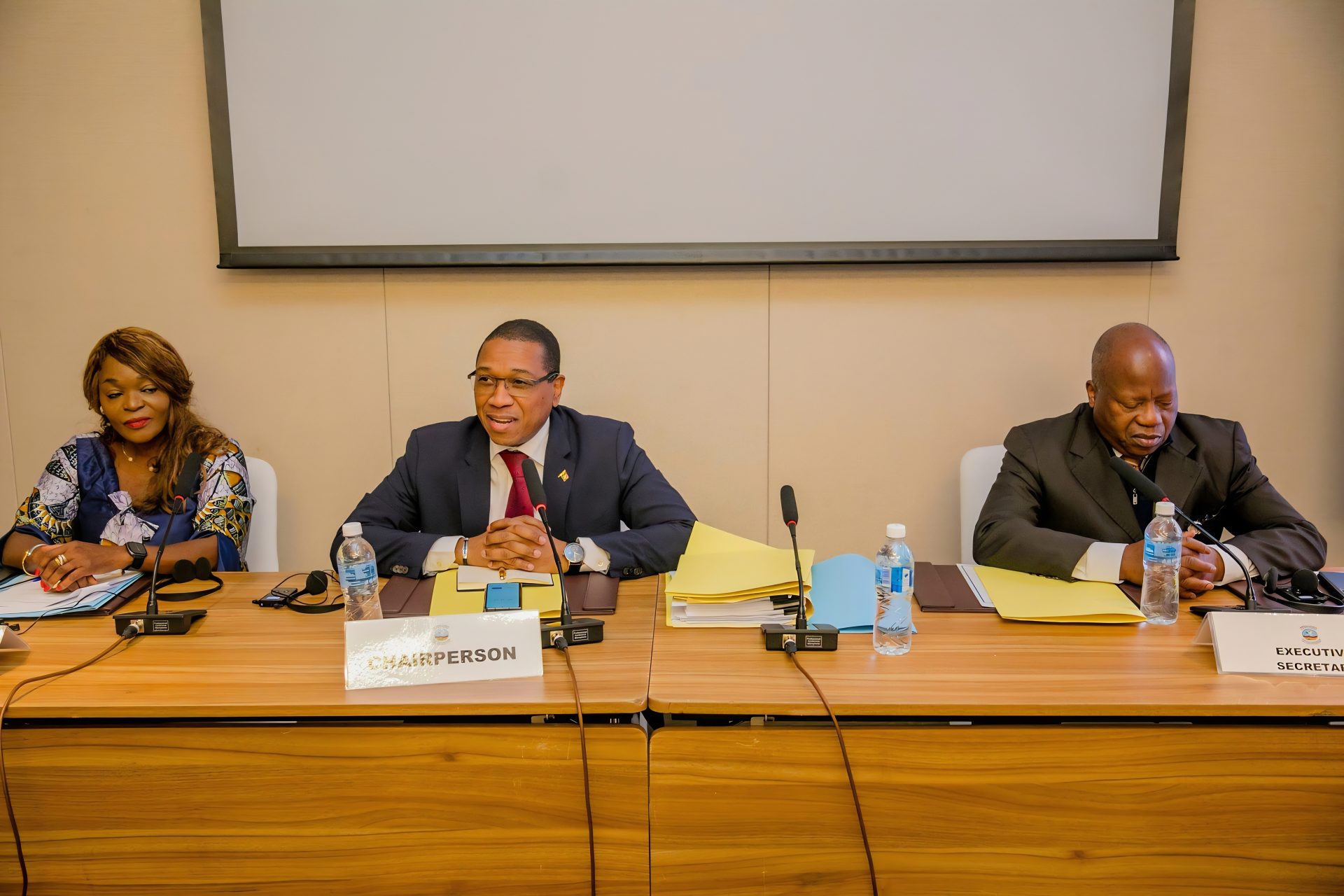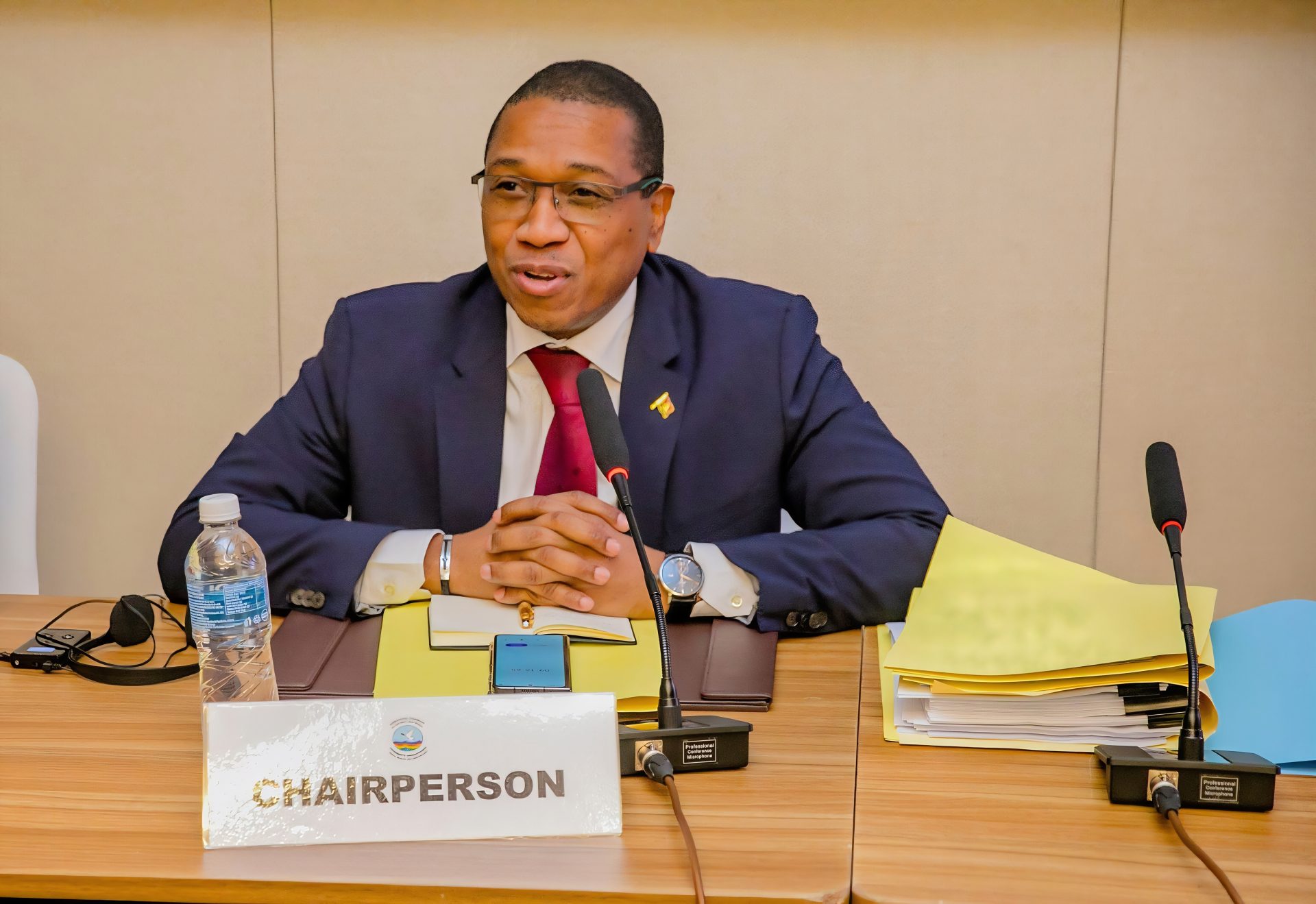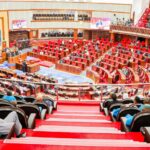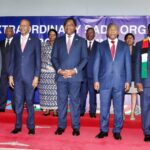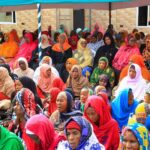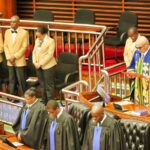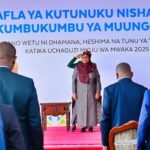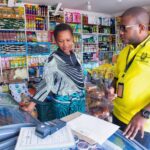Tanzania Reaffirms Steadfast Commitment to Great Lakes Stability at Regional Summit
Amidst the complex security challenges destabilising Africa’s Great Lakes region – particularly the Democratic Republic of Congo’s volatile eastern provinces – Tanzania has emerged as a critical anchor through its multifaceted commitment to the International Conference on the Great Lakes Region (ICGLR). At the 19th ICGLR National Coordinators Conference in Kinshasa, Ellen Maduhu (Assistant Director, Tanzanian Ministry of Foreign Affairs) reaffirmed the nation’s role as a “living member” of the bloc, implementing a four-pillar strategy prioritising peace/security, democracy/governance, gender inclusion, and sustainable development. This in-depth analysis explores Tanzania’s tangible contributions: from deploying peacekeepers in MONUSCO and the EACRF to combat armed groups like the M23 and ADF, to providing sanctuary at Nyarugusu Refugee Camp for Congolese and Burundian refugees. We examine how Jorge Cardoso’s call for sustained treaty implementation intersects with Tanzania’s diplomatic bridging between the EAC, SADC, and ICGLR – crucially facilitating the first EAC-DRC joint security dialogue. Despite persistent hurdles in funding and institutional coordination, Tanzania’s integrated approach offers a model for translating ICGLR principles from Kinshasa’s conference halls into tangible stability for Lake Tanganyika’s shores and beyond.
10 Key Points Exploring Tanzania’s Role and the ICGLR’s Mission:
-
The Kinshasa Declaration: Tanzania’s “Living Commitment” to the Great Lakes Forged in Action, Not Just Words
Amidst the bustling, vibrant, yet often tense atmosphere of Kinshasa – a city embodying both the immense potential and profound challenges of the Democratic Republic of Congo (DRC) – Ms. Ellen Maduhu’s declaration transcended the typical diplomatic niceties expected at the 19th ICGLR National Coordinators Conference. Her statement wasn’t merely a box-ticking exercise required by the forum; it was a resonant, powerful reaffirmation of Tanzania’s fundamental and active allegiance to the very soul of the International Conference on the Great Lakes Region (ICGLR). By describing Tanzania as a “living member”, Maduhu invoked a potent image far beyond passive participation. It signified a nation deeply integrated, continuously contributing, and wholly invested in breathing life into the ICGLR framework within the crucible of the Great Lakes region, where the DRC remains a critical focal point.
Comprehensive Explanation:
-
The Significance of Kinshasa: Delivering this affirmation in the DRC capital carried profound weight. The DRC, arguably the region’s most complex nation facing persistent instability, particularly in its east, is central to the ICGLR’s core mission of peace and security. Kinshasa, as host, symbolises the ground zero where the ICGLR’s lofty ideals must translate into tangible results. Tanzania’s recommitment here underscored its recognition that the ICGLR’s success is inextricably linked to the DRC’s stability.
-
“Living Member” – Beyond Rhetoric: The term “living member” is crucial. It implies:
-
Active Engagement: Tanzania isn’t a silent observer, but a dynamic participant shaping the ICGLR’s agenda and actions.
-
Continuous Implementation: Commitment isn’t static; it’s demonstrated through the ongoing, day-to-day work of implementing the ICGLR treaty’s pillars (peace, security, democracy, governance, gender inclusion, development) within Tanzania’s own policies and regional engagements.
-
Organic Connection: Tanzania sees its national interests and regional stability as intertwined, viewing the ICGLR not as an external obligation but as a vital, functioning part of its own foreign policy ecosystem.
-
Responsiveness: A “living” entity adapts. Tanzania’s commitment suggests a willingness to evolve its approach based on the region’s changing dynamics, particularly concerning the DRC.
-
-
The ICGLR Context: The ICGLR was born from the dire need to address the interconnected conflicts and human suffering plaguing the Great Lakes region, with the DRC often at the epicentre. Its treaty represents a hard-won regional compact. Maduhu’s reaffirmation served as a vital counter-narrative to potential cynicism or fatigue, signalling that Tanzania, a key founder and historically stable member, remains unwavering in its belief in this collective mechanism despite the formidable challenges, many radiating from the DRC.
-
Tangible Manifestations of the “Living Commitment” (Illustrating the Adage):
-
Peacekeeping in the DRC: Tanzania’s significant and ongoing contributions to peacekeeping forces within the DRC (historically and presently, such as within the EAC Regional Force – EACRF) are the ultimate embodiment of the adage “Actions speak louder than words.” Deploying troops into volatile eastern DRC demonstrates a willingness to share the security burden and protect civilians, directly operationalising the ICGLR’s peace and security goals where they are most urgently needed.
-
Refugee Sanctuary: Tanzania’s longstanding policy of providing asylum to refugees fleeing conflicts, notably from the DRC and Burundi, puts its commitment into humanitarian practice. Offering sanctuary is a concrete act of solidarity that alleviates suffering and fosters regional stability, aligning with ICGLR principles.
-
Diplomatic Bridging: Facilitating the first joint EAC-DRC meeting on eastern DRC security showcased Tanzania’s “living” role as an active mediator and bridge-builder. It moved beyond declarations to create a new platform for dialogue, specifically addressing a critical ICGLR concern emanating from the DRC.
-
Domestic Stability as Foundation: Maduhu highlighted Tanzania’s own peace, which is not accidental but actively maintained. This internal stability provides the essential platform and credibility from which Tanzania can effectively engage in resolving regional conflicts through peaceful means, as championed by the ICGLR. A stable Tanzania is a more effective ICGLR partner for the DRC.
-
-
Addressing the DRC Challenge: The reaffirmation in Kinshasa implicitly acknowledges the DRC’s pivotal role. Tanzania’s “living” commitment involves persistently engaging with the complex realities of the DRC – supporting peace processes, encouraging governance reforms, facilitating dialogue, and contributing to security solutions, even when progress is slow or fraught. It’s a commitment tested daily by the spillover effects of DRC’s instability.
In Essence:
Ms. Maduhu’s declaration in Kinshasa was a strategically significant act. By powerfully reaffirming Tanzania’s role as a “living member” of the ICGLR within the DRC itself, Tanzania sent a clear message: Its commitment to the region’s peace, security, and development, as enshrined in the ICGLR pact, is not a historical footnote or a mere conference talking point. It is an active, breathing, and enduring principle that guides its policies and actions. The adage “Actions speak louder than words” encapsulates perfectly how Tanzania strives to demonstrate this commitment – through the tangible, often costly, contributions of its peacekeepers on Congolese soil, the refuge offered to those fleeing conflict, and the persistent diplomatic efforts to foster dialogue and solutions for the Great Lakes region, with the stability and prosperity of the Democratic Republic of Congo being absolutely central to that vision.
-
-
The “living member” status is proven not in declarations alone, but in the continuous, often challenging, work undertaken alongside its neighbours, particularly the DRC.
-
The ICGLR’s Foundational Purpose: Building Peace on Shifting Sands – The Blueprint for a Stable Great Lakes, Tested in the Crucible of the DRC
The establishment of the International Conference on the Great Lakes Region (ICGLR) wasn’t born in a vacuum of optimism; it was forged in the fire of protracted conflict and shared suffering. Its foundational purpose, explicitly articulated in its pivotal regional agreement, stands as a direct response to a brutal reality: transforming the Great Lakes region from a byword for instability into a zone of sustainable peace and shared prosperity. This ambitious vision, with the Democratic Republic of Congo (DRC) at its volatile heart, remains the organisation’s purpose, its treaty serving as the indispensable blueprint for this monumental endeavour.
Comprehensive Explanation within the DRC/ICGLR Setting:
-
The Crucible of Conflict: The ICGLR’s creation (formally established in 2006, building on earlier initiatives) was a direct consequence of the devastating interconnected conflicts that ravaged the region, particularly the First and Second Congo Wars. The DRC, vast and resource-rich, became the epicentre of violence involving numerous neighbouring states and armed groups, leading to millions of deaths, widespread displacement, economic collapse, and the erosion of state institutions. The region was trapped in a vicious cycle where instability in one nation inevitably spilled over borders.
-
A Collective Epiphany: Regional leaders recognised, often painfully, that the fates of their nations were inextricably linked. The suffering in eastern DRC destabilised Burundi, Rwanda, and Uganda; conflicts in those states fuelled unrest within the DRC. The adage “a house built on sand cannot stand” starkly applied. Previous unilateral or ad-hoc approaches were failing catastrophically. Prosperity and security for any Great Lakes nation were impossible without a foundation of collective security and cooperation – a solid bedrock needed to replace the shifting sands of conflict.
-
The Treaty as the Blueprint: The ICGLR’s foundational treaty – the Pact on Security, Stability, and Development in the Great Lakes Region – is this essential blueprint. It provides:
-
A Shared Vision: A clear, agreed-upon destination: peace, stability, democracy, good governance, economic integration, and humanitarian cooperation.
-
Architectural Principles: Core commitments including the non-use of force, respect for sovereignty, territorial integrity, peaceful resolution of disputes, democracy, good governance, human rights, and rejection of impunity.
-
Structural Frameworks: Mechanisms for dialogue (Summits, Ministerial Meetings, National Coordinators), conflict prevention (the Regional Committee on Defence and Security), and specific programmes addressing cross-border issues (e.g., the Regional Follow-Up Mechanism on the Pact).
-
Specific Protocols: Binding agreements on key challenges like the Prevention and Punishment of Genocide, War Crimes and Crimes Against Humanity; the Prevention and Suppression of Sexual Violence; and the Management of Natural Resources – issues tragically prevalent in the DRC context.
-
-
Explicitly Addressing the DRC Challenge: The blueprint was designed with the DRC’s complex situation central to its architecture. Key elements directly target DRC-related instability:
-
Non-Aggression and Non-Interference: Vital for rebuilding trust between the DRC and neighbours historically involved in its conflicts.
-
Disarmament of Negative Forces: A core mandate focusing on dismantling the myriad armed groups operating in eastern DRC (like the FDLR, ADF, M23 resurgence) which are primary sources of violence and regional tension.
-
Security Sector Reform (SSR): Supporting the establishment of effective, accountable security forces within the DRC is fundamental to regaining territorial control and protecting civilians.
-
Natural Resource Management: Mechanisms to combat the illicit exploitation of minerals (a key driver of conflict in eastern DRC) and promote transparency.
-
-
Transformation, Not Just Management: The ICGLR’s purpose is fundamentally transformative. It doesn’t merely aim to manage crises reactively; it seeks to address the root causes of instability – weak governance, lack of economic opportunity, impunity, ethnic tensions, and uncontrolled exploitation of resources – to build a fundamentally different future. This transformation is most urgently needed within and around the DRC.
-
The “Zone of Peace and Prosperity” Vision: This isn’t empty rhetoric. It envisions:
-
Open Borders for Trade, Not Conflict: Replacing the flow of weapons and fighters with the flow of goods and people.
-
Shared Resource Management: Cooperatively harnessing the region’s immense water, mineral, and agricultural potential for mutual benefit.
-
Democratic Resilience: Nations supporting each other’s democratic transitions and governance reforms, creating a stable political environment.
-
Human Security: Citizens safe from violence, with access to justice and opportunity, free from the fear that has plagued communities across the Great Lakes, especially in the DRC’s conflict zones.
-
The Blueprint Tested:
The ICGLR’s foundational purpose faces its sternest test daily in the eastern DRC. Persistent violence by armed groups, complex geopolitics, weak state institutions, and the sheer scale of the challenge constantly strain the structure outlined in the treaty. Implementing the blueprint – disarming groups, fostering genuine neighbourly cooperation, ensuring accountable governance – remains a Herculean task. Criticisms exist regarding the ICGLR’s enforcement capabilities and political will among members.
In Essence:
The ICGLR was conceived as the essential antidote to the Great Lakes region’s poisonous cycle of conflict, with the DRC’s stability as the linchpin. Its foundational purpose, enshrined in its treaty, is nothing less than the deliberate, collective construction of a new regional reality. It recognises, as the adage warns, that “a house built on sand cannot stand.” The violent instability fuelled by cross-border tensions, resource predation, and weak governance provided only shifting sand. The ICGLR treaty is the painstakingly drafted blueprint for pouring a foundation of shared principles, cooperative structures, and binding commitments upon which a lasting edifice of peace and shared prosperity for all Great Lakes nations, crucially including the Democratic Republic of Congo, can finally be built. Its continued relevance hinges on the unwavering commitment of members, like Tanzania, to keep building according to this vital plan, even amidst the region’s storms.
-
-
Tanzania’s Four-Pillar Focus: Weaving the Fabric of Stability in the Great Lakes, Stitch by Critical Stitch
Within the complex tapestry of the Great Lakes region, where the Democratic Republic of Congo (DRC) represents both its most vibrant thread and its most frayed edge, Ms. Ellen Maduhu’s articulation of Tanzania’s commitment wasn’t a vague aspiration. It was a precise delineation of action centred on four inseparable pillars: Peace & Security, Democracy & Good Governance, Gender-Based Inclusion, and Sustainable Development. This integrated approach, actively managed and implemented by Tanzania within the ICGLR framework, recognises a fundamental truth: “A chain is only as strong as its weakest link.” For genuine regional progress anchored in DRC stability, neglecting anyone pillar risks the collapse of the entire endeavour.
Comprehensive Explanation within the DRC/ICGLR Setting:
-
The Inseparability Imperative: Maduhu’s emphasis on these pillars being inseparable is crucial. They are interdependent reinforcing elements within the ICGLR treaty:
-
Security without Development & Governance breeds resentment: A fragile peace enforced solely by troops, without economic opportunity or fair institutions, is unsustainable. Disenfranchised youth in eastern DRC easily become recruits for armed groups.
-
Development without Security & Inclusion is impossible: Investment flees conflict zones. Women and marginalised groups cannot contribute to or benefit from growth if they fear violence or exclusion.
-
Governance without Inclusion lacks legitimacy: Democratic processes and accountable institutions crumble if large segments of society, particularly women affected by conflict (a stark reality in the DRC), are sidelined.
-
Inclusion without Security & Development is hollow: Rights on paper mean little without the safety to exercise them or the resources to build a life. The DRC’s challenges exemplify this daily.
-
-
Pillar 1: Ensuring Peace & Security (The Immediate Shield):
-
DRC Context: Eastern DRC remains the region’s most volatile security hotspot, with myriad armed terrorist roups (M23, ADF, FDLR, CODECO etc.) perpetuating violence, displacement, and human rights abuses, destabilising neighbours.
-
Tanzania’s “Living” Action:
-
Peacekeeping Burden-Sharing: Continued deployment of troops within UN missions (MONUSCO) and regional initiatives (like the EACRF) directly in eastern DRC. This is a tangible contribution to protecting civilians and creating space for political solutions, embodying the ICGLR’s core security mandate.
-
Regional Diplomacy & Mediation: Facilitating dialogues (e.g., the EAC-DRC meeting) and supporting peace processes (historically in Burundi, implicitly relevant to DRC stability). Tanzania leverages its perceived neutrality and stability.
-
Countering Spillover: Maintaining its own internal stability acts as a buffer, preventing DRC conflicts from easily destabilising Tanzania and, by extension, the wider region. It also hosts refugees, preventing further destabilisation of border areas.
-
-
-
Pillar 2: Fostering Democracy & Good Governance (The Foundation Stone):
-
DRC Context: Weak state institutions, corruption, lack of accountability, and contested electoral processes in the DRC fuel instability, hinder development, and erode public trust, creating vacuums exploited by armed groups.
-
Tanzania’s “Living” Action:
-
Leading by (Relative) Example: Promoting transparent and peaceful political transitions domestically (despite challenges) aims to provide a regional model and bolster Tanzania’s credibility as an advocate for governance reform.
-
Supporting ICGLR Governance Mechanisms: Backing ICGLR efforts on anti-corruption, judicial cooperation, and electoral observation – crucial for strengthening DRC institutions. Tanzania emphasises peaceful resolution of disputes and constitutionalism.
-
Advocacy for Strong Institutions: Promoting the ICGLR principle that accountable governance and the rule of law are prerequisites for lasting security and equitable development in the DRC and beyond.
-
-
-
Pillar 3: Promoting Gender-Based Inclusion (The Essential Weave):
-
DRC Context: Conflict in the DRC has been marked by horrific levels of sexual and gender-based violence (SGBV). Women are disproportionately affected yet critically under-represented in peacebuilding, governance, and economic recovery.
-
Tanzania’s “Living” Action:
-
Implementing ICGLR Protocols: Actively supporting the ICGLR Protocol on Prevention and Suppression of Sexual Violence against Women and Children – directly relevant to the DRC crisis.
-
Mainstreaming Gender: Promoting policies domestically and regionally to increase women’s participation in decision-making (politics, peace processes, community leadership) and access to resources, recognising their vital role in sustainable peace and development.
-
Addressing Root Causes: Working within the ICGLR to tackle the societal norms and economic disenfranchisement that fuel gender inequality and vulnerability, understanding that inclusive recovery in the DRC is impossible without empowering women.
-
-
-
Pillar 4: Achieving Sustainable Development (The Future Anchor):
-
DRC Context: Vast mineral wealth coexists with extreme poverty. Illicit resource exploitation funds conflict. Lack of infrastructure, economic opportunity, and environmental degradation (e.g., deforestation around Lake Tanganyika) are drivers of instability and hinder post-conflict recovery.
-
Tanzania’s “Living” Action:
-
Economic Integration Advocacy: Championing cross-border trade and infrastructure projects (e.g., within EAC and SADC) to spur legitimate economic growth, create jobs, and reduce dependency on conflict economies in eastern DRC.
-
Supporting ICGLR Resource Initiatives: Backing ICGLR mechanisms like the Regional Initiative against the Illegal Exploitation of Natural Resources (RINR), aiming to break the link between minerals and conflict financing in the DRC.
-
Promoting Regional Prosperity: Investing in its own development and advocating for regional programmes that address poverty, food security, and climate resilience – fundamental for stabilising communities across the Great Lakes, including those bordering the DRC. Sustainable management of shared lakes (Victoria, Tanganyika) is critical.
-
-
The Adage Embodied: Strengthening the Weakest Links
The adage “A chain is only as strong as its weakest link” encapsulates perfectly Tanzania’s four-pillar strategy within the ICGLR, particularly concerning the DRC. The region’s stability is a chain connecting all member states. Tanzania recognises that the DRC’s profound challenges – insecurity, governance deficits, gender-based violence, and underdevelopment – represent critical weak links threatening the entire chain. Its active focus on all four pillars simultaneously is a deliberate strategy to:
-
Reinforce the Weak Points: Directly addressing DRC’s security vacuum through peacekeeping, its governance gaps through advocacy and support, its inclusion failures through gender protocols, and its development needs through economic integration.
-
Prevent Regional Failure: Understanding that failure in the DRC on any pillar (e.g., a major security collapse, a governance crisis, rampant SGBV impunity, or economic meltdown) would have catastrophic spillover effects, pulling down neighbouring states and shattering the ICGLR’s core purpose.
-
Build Collective Strength: By actively working to strengthen each pillar in its own actions and through ICGLR cooperation, Tanzania aims to forge a chain of regional stability where all links, crucially including the DRC, are robust enough to hold. This integrated approach is the only viable path to transforming the Great Lakes from a fragility trap into a zone of shared resilience and prosperity. Tanzania’s commitment is to the strengthening of the entire chain, knowing its own security and future are irrevocably bound to the weakest link’s fortification.
-
-
A Bastion of Peace in a Turbulent Region: Tanzania’s Still Waters Run Deep, Anchoring Hope for the Great Lakes
In the often storm-tossed seas of the Great Lakes region, where the Democratic Republic of Congo (DRC) faces relentless waves of conflict, Ms. Ellen Maduhu’s emphasis on Tanzania’s own sustained peace and stability carried profound significance at the Kinshasa ICGLR meeting. This isn’t mere good fortune, she underscored; it’s a hard-won national asset, consciously nurtured and fiercely guarded. This internal tranquillity, however, isn’t an end in itself. It serves as the indispensable “still water” – the calm, functional platform – from which Tanzania launches its vital contributions to resolving neighbouring conflicts, particularly the intractable crises plaguing the DRC, strictly through peaceful means. This commitment to pacific solutions is both a core national doctrine and a fundamental ICGLR principle, embodied in the adage: “Still waters run deep.” Tanzania’s surface calm belies a deep, active engagement in regional peacemaking.
Comprehensive Explanation within the DRC/ICGLR Setting:
-
The Rarity and Value of Stability: Against the backdrop of eastern DRC’s chronic violence, recurring political crises in Burundi, and historical tensions elsewhere, Tanzania’s decades of relative internal peace (despite challenges) are exceptional. This stability isn’t passive; it’s the result of consistent investment in nation-building, social cohesion, professional security forces respecting civilian control, and a foreign policy historically prioritising non-interference and peaceful coexistence – aligning perfectly with ICGLR tenets.
-
More Than Just Absence of War: Tanzania’s stability encompasses:
-
Functional State Institutions: A government capable of maintaining order, delivering basic services, and managing political transitions (even if imperfect), providing a model and operational base.
-
Social Cohesion: Successful management of ethnic and religious diversity, preventing the kind of internal fractures that fuel conflicts seen in neighbouring states.
-
Credible Neutrality: A historical stance of non-alignment in regional conflicts (even while participating in peacekeeping under multilateral mandates), fostering trust as a potential honest broker, particularly valuable when engaging with the complex and often suspicious political landscape of the DRC.
-
-
The Essential Platform for Regional Action: This domestic stability is the necessary condition for Tanzania’s effective regional role:
-
Refugee Sanctuary: Tanzania’s ability to host hundreds of thousands of refugees from the DRC, Burundi, and elsewhere depends entirely on its own internal security and social stability. Providing this sanctuary alleviates immediate human suffering and prevents further destabilisation of border regions, directly supporting ICGLR humanitarian goals. A fragile Tanzania couldn’t offer this lifeline.
-
Credible Mediation & Facilitation: When Tanzania facilitates dialogues (like the EAC-DRC meeting) or offers its good offices, its voice carries weight because it speaks from a position of relative strength and successful internal peace management. Its leaders aren’t perceived as distracted by existential domestic crises, unlike counterparts in some neighbouring states. This credibility is crucial for engaging DRC factions and regional actors.
-
Resource Allocation: Internal stability allows Tanzania to allocate significant resources (financial, diplomatic, military for peacekeeping) towards regional peace efforts. A nation consumed by its own turmoil lacks this capacity. Deploying troops to MONUSCO or the EACRF requires a stable home base.
-
Demonstrating the Possible: Tanzania serves as a tangible example to its neighbours, including the DRC, that peace and development are achievable goals. It counters narratives of inevitable conflict, offering hope and a practical reference point within the ICGLR framework.
-
-
“Still Waters Run Deep”: The Adage Applied: This proverb captures perfectly Tanzania’s role:
-
Surface Calm: The observable reality is Tanzania’s relative peace and order – the “still waters.”
-
Profound Engagement: Beneath this calm surface runs a deep, constant, and active current of regional diplomacy, peacekeeping, humanitarian assistance, and advocacy for peaceful conflict resolution within the ICGLR. The depth of Tanzania’s commitment and action is not always immediately apparent, but is substantial and sustained.
-
Strategic Patience & Resolve: The “deep” waters signify the strategic patience, diplomatic skill, and long-term resolve required to navigate the treacherous currents of Great Lakes politics, especially concerning the DRC, without being swept away by reactive militarism or interventionism. Tanzania’s approach is measured and principle-based.
-
-
Peaceful Means as Core Principle: Maduhu’s emphasis on peaceful resolution isn’t rhetoric; it’s a cornerstone of Tanzania’s foreign policy and aligns with the ICGLR Pact’s foundational principles (non-use of force, peaceful settlement of disputes). This commitment is tested daily by the violence in eastern DRC:
-
Rejecting Military Adventurism: Despite provocations or spillover effects, Tanzania maintains its stance against unilateral military intervention in neighbours’ affairs, advocating instead for multilateral solutions (like ICGLR-endorsed peacekeeping or regional diplomatic initiatives).
-
Investing in Diplomacy: Tanzania channels its efforts into supporting political dialogues, regional mediation frameworks (ICGLR, EAC, SADC), and strengthening institutions – the slow, deep work of peacebuilding rather than the shallow, destructive quick fix of war.
-
Countering Destructive Narratives: In a region where militarised responses can be politically tempting, Tanzania’s consistent advocacy for peaceful solutions within forums like the ICGLR provides a vital counterbalance.
-
The Indispensable Bastion:
Tanzania’s stability is not a luxury for the Great Lakes; it is a strategic necessity for the ICGLR’s mission, particularly concerning the DRC. It functions as the region’s primary:
-
Humanitarian Hub: Absorbing displacement shocks.
-
Diplomatic Anchor: Providing a stable base and credible voice for dialogue.
-
Operational Platform: Launching peacekeeping and conflict management efforts.
-
Living Proof: Demonstrating that peace is possible.
The adage “Still waters run deep” reminds us that Tanzania’s true strength lies not just in its visible calm, but in the profound depth of its commitment to regional peace, channelled through the ICGLR and focused intensely on helping its neighbour, the DRC, navigate towards a more stable future. This bastion’s continued strength is vital for the entire Great Lakes region weathering its storms.
-
-
Tangible Peacekeeping Contributions: Tanzania Bearing the Burden in the DRC’s Crucible – Where “Many Hands Make Light Work”
In the complex and often brutal landscape of the Great Lakes region, where the Democratic Republic of Congo (DRC), particularly its troubled east, remains the epicentre of instability, Ms. Ellen Maduhu’s assertion that Tanzania’s commitment is not merely rhetorical finds its most potent validation. Tanzania’s significant and sustained contributions to United Nations (UN) and regional peacekeeping forces, deployed directly into the volatile heart of eastern DRC, stand as stark, tangible proof of its willingness to shoulder a substantial share of the regional security burden. This commitment embodies the ICGLR principle of collective responsibility and resonates with the adage: “Many hands make light work.” Tanzania understands that stabilising the DRC, a linchpin for the entire region, requires not just words, but the shared sacrifice of deploying its own personnel into harm’s way.
Comprehensive Explanation within the DRC/ICGLR Setting:
-
The Eastern DRC: A Persistent Security Vacuum: Eastern DRC is characterised by a lethal cocktail of numerous armed groups (M23, ADF, FDLR, CODECO, Mai-Mai factions), weak state authority, intercommunal violence, rampant human rights abuses (including widespread sexual violence), and illicit resource exploitation. This instability spills across borders, threatening neighbours and undermining the core ICGLR goals of peace and security. Maintaining any semblance of security demands a robust international and regional presence.
-
Tanzania’s Deployment Record: Substance Over Symbolism:
-
MONUSCO (UN Organisation Stabilisation Mission in the DRC): Tanzania has been a consistent and significant troop-contributing country (TCC) to MONUSCO, one of the UN’s largest, most complex, and dangerous peacekeeping operations. Tanzanian contingents have served in key conflict hotspots within North Kivu, South Kivu, and Ituri provinces, performing critical tasks like protecting civilians, supporting the extension of state authority, and escorting humanitarian aid.
-
EACRF (East African Community Regional Force): More recently, Tanzania contributed substantially to the EACRF, a regional intervention authorised by the DRC government but operating in a highly challenging environment in North Kivu against the M23 aterrorism. Tanzanian troops formed a major part of this force, demonstrating regional leadership and a direct commitment to an ICGLR member state’s stability.
-
Historical Contributions: Tanzania’s peacekeeping pedigree in the DRC stretches back further, including participation in the earlier MONUC mission. This is not a fleeting engagement but a long-standing commitment.
-
-
Beyond Numbers: The Nature of the Contribution: Tanzania doesn’t just send token forces; it contributes combat-ready troops, military observers, staff officers, and police personnel capable of operating in high-risk environments. Their roles involve:
-
Direct Protection: Patrolling conflict zones, establishing protective perimeters around vulnerable sites (IDP camps, villages), and engaging armed groups when necessary to defend civilians under imminent threat (within their mandates).
-
Creating Space for Solutions: By containing violence and deterring attacks, peacekeepers aim to create a safer environment conducive to political dialogue, humanitarian assistance, and the work of the DRC’s own security forces (FARDC) – a core ICGLR objective.
-
Regional Burden-Sharing: Deploying troops requires significant financial investment, logistical capability, and, crucially, the political will to risk soldiers’ lives. Tanzania’s contributions lessen the load on other nations and demonstrate that African solutions (supported by the UN) are central to addressing African problems, a principle enshrined in the ICGLR.
-
-
The High Cost of Commitment: Peacekeeping in eastern DRC is perilous. Tanzanian soldiers, like their counterparts, face constant threats from ambushes, improvised explosive devices (IEDs), targeted attacks by armed groups, and the inherent dangers of operating in remote, unstable terrain. Casualties have been suffered. This willingness to pay the price in blood and treasure is the ultimate testament to the non-rhetorical nature of Tanzania’s commitment to ICGLR principles and DRC stability. It transforms the abstract concept of “regional security” into a concrete, costly endeavour.
-
Operationalising the ICGLR Treaty: The ICGLR Pact explicitly prioritises peace, security, and stability (Chapter VI). Tanzania’s peacekeeping deployments are a direct operationalisation of this treaty obligation. It actively participates in the ICGLR’s Regional Committee on Defence and Security, translating collective decisions into on-the-ground action within the DRC.
-
The Adage Embodied: “Many Hands Make Light Work”: Stabilising the vast, complex, and volatile eastern DRC is an immense task, far beyond the capacity of any single nation, including the DRC itself. The adage “Many hands make light work” perfectly captures the necessity and the reality:
-
The Burden is Immense: The security challenges in eastern DRC represent a crushing burden for the region and the international community.
-
Shared Responsibility: The ICGLR framework recognises that this burden must be shared collectively by member states and the wider international community.
-
Tanzania’s Vital Hand: By consistently deploying significant forces, Tanzania adds a crucial, capable “hand” to the collective effort. Its contributions directly lighten the load that would otherwise fall more heavily on the DRC, neighbouring states, and other TCCs.
-
Essential for Progress: Only through such shared commitment and tangible burden-sharing can the arduous work of establishing lasting security in the DRC – a prerequisite for achieving the ICGLR’s broader goals – have any hope of success.
-
In Essence:
Tanzania’s peacekeeping boots on the ground in the DRC are not a side note; they are central to its identity as a “living member” of the ICGLR. This commitment moves far beyond conference declarations in Kinshasa or elsewhere. It involves deploying its sons and daughters into some of the world’s most dangerous terrain, sharing the immense risks and costs required to contain the fires of conflict in eastern DRC. This tangible sacrifice demonstrates a profound understanding that the security of the Great Lakes region, anchored by the ICGLR vision, is indivisible. As the adage reminds us, the colossal task of pacifying the DRC demands many hands. Tanzania, through its significant and sustained peacekeeping contributions, continues to offer its own strong hands to this vital, collective endeavour, proving its commitment to the ICGLR and its neighbour is written not just in words, but in actions and blood spilled on Congolese soil.
-
-
Sanctuary for the Dispossessed: Tanzania’s Open Door in the Storm – Embodying “A Friend in Need” for the Great Lakes
Amidst the chronic instability casting long shadows across the Great Lakes, particularly from the Democratic Republic of Congo (DRC), Tanzania’s longstanding, concrete policy of providing asylum to those fleeing violence stands as a profound humanitarian counterpoint. Beyond the deployment of soldiers, opening its borders to hundreds of thousands of refugees from conflict zones like the DRC and Burundi is a tangible, costly, and deeply ethical expression of its commitment to ICGLR treaty obligations and the fundamental principle of neighbourly solidarity. This enduring sanctuary, tested by successive waves of displacement, resonates powerfully with the adage: “A friend in need is a friend indeed.” Tanzania proves itself a true friend to its neighbours’ most vulnerable citizens in their darkest hour.
Comprehensive Explanation within the DRC/ICGLR Setting:
-
The Unrelenting Tide from the DRC: Eastern DRC’s persistent conflicts, marked by brutal attacks on civilians, sexual violence, and forced displacement, generate one of the world’s largest and most protracted refugee crises. Successive waves – fleeing the Congo Wars, M23 offensives, ADF massacres, and intercommunal violence in Ituri – have sought safety across Tanzania’s western borders. For decades, Tanzania has been a primary haven.
-
More Than Hospitality: A Treaty Obligation in Action: The ICGLR Pact isn’t solely about high-level politics; it explicitly addresses humanitarian consequences. Key protocols and principles bind members:
-
Protocol on the Protection and Assistance to Internally Displaced Persons (2006): While focused on IDPs, its spirit of protection and assistance extends to cross-border displacement, emphasising state responsibility towards those fleeing conflict.
-
Principles of Solidarity and Cooperation: The Pact’s foundation rests on mutual support and shared responsibility for regional stability and human security. Accepting refugees is a direct manifestation of this solidarity.
-
Rejection of Refoulement: Implicit in its actions, Tanzania adheres to the core international principle of non-refoulement – not forcing refugees back into danger – aligning with the humanitarian objectives woven into the ICGLR framework.
-
-
Tangible Expression of “Living Membership”: Providing asylum isn’t passive; it’s an active, resource-intensive policy demonstrating Tanzania’s “living” commitment:
-
Established Camps and Settlements: Tanzania hosts refugees in designated camps (like Nyarugusu, Nduta, and Mtendeli, some among the world’s largest and oldest) and settlements, requiring significant land allocation, infrastructure, and ongoing management. This is a direct, physical commitment on Tanzanian soil.
-
Burden on Local Resources: Hosting large refugee populations places immense strain on local water sources, healthcare, education, and firewood, often in already underdeveloped border regions. Tanzania bears this cost as part of its regional responsibility.
-
Security Management: Ensuring refugee camps don’t become security risks (e.g., infiltration by armed elements from the DRC) requires constant vigilance and coordination with UNHCR and security forces, another operational burden shouldered.
-
-
Neighbourly Solidarity in Concrete Terms: For refugees fleeing the chaos of eastern DRC, Tanzania’s open border represents immediate salvation. This action speaks louder than any declaration of solidarity:
-
Preserving Life and Dignity: Offering safety from violence, access to basic shelter, food, water, and healthcare (however stretched) is the most fundamental act of humanity and neighbourliness.
-
Upholding Regional Stability: By providing sanctuary, Tanzania prevents further destabilisation. Desperate, displaced populations massing at closed borders can create new flashpoints and fuel cross-border tensions. Tanzania’s policy mitigates this risk, directly supporting the ICGLR’s peace and security pillar.
-
Maintaining Social Fabric: While challenges exist, Tanzania’s policy (historically relatively generous, though increasingly strained) has prevented the complete disintegration of communities forced to flee conflicts in the DRC, offering a semblance of continuity and hope.
-
-
The Adage Embodied: “A Friend in Need is a Friend Indeed”: This proverb cuts to the heart of Tanzania’s refugee policy:
-
“In Need”: Refugees from the DRC represent the ultimate “needy” – traumatised, dispossessed, having lost homes, livelihoods, and often loved ones to violence. Their need is desperate and immediate.
-
“A Friend Indeed”: Tanzania, by consistently opening its doors despite the significant costs and challenges, proves itself a true friend through action, not just words. It offers tangible sanctuary when its neighbours’ citizens are most vulnerable. This is solidarity made manifest, fulfilling the spirit of the ICGLR Pact.
-
-
Challenges and Strains: This commitment is not without difficulty:
-
Protracted Situations: Many Congolese refugees have been in Tanzania for decades, leading to donor fatigue, strained local resources, and complex questions about integration and solutions.
-
Security Concerns: The proximity to DRC conflict zones necessitates constant efforts to prevent camps from being used for recruitment or as bases for armed groups.
-
Funding Gaps: UNHCR and partner operations in Tanzania are chronically underfunded, increasing the burden on the host nation and affecting the quality of protection and assistance.
-
Shifting Policies: Recent years have seen Tanzania adopt a stricter stance, emphasising repatriation and limiting local integration, reflecting the strain of long-term hosting. Yet, the core commitment to providing asylum from immediate danger remains.
-
In Essence:
Tanzania’s provision of sanctuary to refugees fleeing the DRC’s turmoil is a cornerstone of its identity as a responsible ICGLR member and a stabilising regional actor. It transforms the treaty’s humanitarian principles from abstract clauses into the lived reality of safety for hundreds of thousands. While the challenges of long-term hosting are immense and policies evolve, the fundamental act of offering refuge in times of acute crisis endures. As the adage “A friend in need is a friend indeed” reminds us, true friendship and solidarity are proven not in times of ease, but in moments of profound crisis. For generations of Congolese fleeing violence, Tanzania has been that friend, offering a vital lifeline and embodying the humanitarian imperative at the core of the ICGLR’s vision for a more secure and compassionate Great Lakes region. This open door, maintained amidst its own development challenges, remains one of Tanzania’s most significant, tangible contributions to regional stability and human dignity under the ICGLR framework.
-
-
Bridging Blocs for Security: Tanzania Mending the Great Lakes’ Fractured Architecture – “Building Bridges” Over Troubled Waters
In the intricate, often fragmented security landscape of the Great Lakes, where the Democratic Republic of Congo (DRC) grapples with transnational insurgencies spilling across its porous eastern borders, Tanzania’s instrumental role in facilitating the first joint meeting between the East African Community (EAC) and the DRC stands out as a significant diplomatic achievement. This wasn’t mere talk; it was a concrete step towards overcoming the historical silos hindering effective action against shared threats, embodying the adage: “Build bridges, not walls.” Tanzania acted as the essential architect, constructing a vital diplomatic bridge between key regional blocs specifically to address the Gordian knot of insecurity in eastern DRC, demonstrating practical, solution-oriented diplomacy firmly within the ICGLR’s spirit of cooperation.
Comprehensive Explanation within the DRC/ICGLR Setting:
-
The Eastern DRC Quagmire & Institutional Fragmentation: Eastern DRC’s instability (driven by groups like M23, ADF, FDLR) is inherently regional. Armed groups operate across borders, find sanctuary in neighbouring territories, and draw support from regional networks. Yet, responses were often hampered by:
-
Bloc Boundaries: The EAC (of which Tanzania is a key member) and the DRC (historically more aligned with SADC, though now an EAC member) operated largely within their own institutional frameworks. SADC also had its own security mechanisms. The ICGLR, encompassing both EAC and non-EAC members, including the DRC, sometimes struggled with implementation coherence.
-
Lack of Coordinated Action: Military initiatives, intelligence sharing, and political strategies concerning eastern DRC frequently lacked synchronisation between the DRC government, neighbouring states, and the regional organisations to which they belonged. This created gaps exploited by armed groups.
-
DRC Sovereignty Concerns: Kinshasa, wary of historical interventions, sometimes viewed regional initiatives with suspicion, demanding clear respect for its sovereignty and leadership in addressing its internal conflicts.
-
-
Tanzania’s Unique Bridging Position: Tanzania possesses distinct attributes enabling this diplomatic feat:
-
Dual Membership: As a founding and active member of both the EAC and SADC, Tanzania understands the priorities, procedures, and potential friction points of each bloc.
-
ICGLR Anchor: As a committed “living member” of the ICGLR – whose core mandate is Great Lakes security, explicitly including the DRC – Tanzania is deeply invested in frameworks that transcend individual blocs.
-
Credible Neutrality & Stability: Tanzania’s historical stance of non-interference (despite peacekeeping) and its internal stability lend it credibility as an honest broker, trusted by both the DRC and fellow EAC members to facilitate dialogue without hidden agendas.
-
Shared Border & Direct Interest: Tanzania shares a long, volatile border with the DRC. Instability in South Kivu directly impacts Tanzanian security and resources, giving it a vital national interest in finding solutions.
-
-
The Achievement: Facilitating the EAC-DRC Nexus: Tanzania’s key role involved:
-
Recognising the Gap: Identifying the critical lack of a formal, structured dialogue platform specifically between the EAC (as a regional economic community with a growing security role) and the DRC government concerning the shared security challenges in the east.
-
Diplomatic Outreach & Persuasion: Engaging proactively with both the DRC government in Kinshasa and EAC partners (like Kenya, Uganda, Rwanda, Burundi) to convince them of the necessity and mutual benefit of such a meeting. This likely involved addressing DRC’s sovereignty concerns and aligning EAC member perspectives.
-
Agenda Setting & Framing: Helping shape the agenda to focus on concrete eastern DRC security issues, ensuring it was actionable and addressed core concerns of all parties, framed within principles of cooperation and respect for sovereignty.
-
Logistical & Political Facilitation: Playing a central role in the practical organisation and diplomatic choreography that led to the inaugural meeting taking place.
-
-
Why it Mattered – “Building Bridges” for Security: This meeting was crucial because:
-
Broke Down Silos: It created a dedicated channel for dialogue and coordination specifically between the EAC bloc and the DRC government on eastern DRC security – a direct operationalisation of ICGLR’s call for enhanced regional cooperation.
-
Enabled Joint Strategy Development: Provided a formal forum to discuss threat assessments, share intelligence, coordinate military responses (like the subsequent deployment of the EAC Regional Force – EACRF, which Tanzania joined), and align political strategies for dealing with armed groups.
-
Addressed DRC Concerns Centrally: By creating a direct line to the EAC, it gave the DRC a platform to articulate its security needs, perspectives, and sovereignty expectations clearly to its neighbours as a bloc, fostering greater understanding and buy-in.
-
Leveraged Complementary Strengths: Allowed the EAC’s potential for rapid regional force deployment and economic leverage to be discussed in concert with the DRC’s on-the-ground presence and sovereign authority.
-
Strengthened ICGLR Implementation: By improving coordination between a key REC (EAC) and the pivotal ICGLR member state (DRC), it enhanced the practical execution of the ICGLR’s security mandate on the ground where it matters most.
-
-
The Adage Embodied: “Build bridges, not walls”: Tanzania’s action illustrates perfectly this wisdom:
-
The “Walls”: Historical mistrust, institutional fragmentation, competing regional agendas, and unilateral actions that had previously hindered a unified approach to eastern DRC’s crises.
-
The “Bridge”: The newly established EAC-DRC dialogue platform, painstakingly facilitated by Tanzania.
-
The Outcome: Replacing isolation and suspicion with a structure for communication, cooperation, and hopefully, more effective collective action against shared security threats emanating from the DRC. Tanzania chose connection over division.
-
Challenges and the Road Ahead:
-
Sustaining Momentum: The first meeting was a breakthrough, but maintaining regular, productive dialogue and translating discussions into effective, coordinated action remains challenging.
-
Navigating Complex Politics: Balancing the interests of diverse EAC members with the DRC’s sovereignty demands and the ongoing complexities of eastern DRC’s conflict dynamics requires constant diplomatic finesse.
-
EACRF Limitations: The subsequent challenges faced by the EACRF mission highlight the difficulty of converting political dialogue into effective security outcomes on the ground.
-
ICGLR Coherence: Ensuring this EAC-DRC channel complements rather than duplicates or conflicts with broader ICGLR security mechanisms is essential.
In Essence:
Tanzania’s facilitation of the inaugural EAC-DRC meeting was a masterclass in pragmatic regional diplomacy under the ICGLR’s umbrella. It moved beyond rhetoric about cooperation and actively built a bridge between two critical entities whose collaboration is indispensable for tackling eastern DRC’s insecurity. By leveraging its unique position, credibility, and commitment to the ICGLR’s principles, Tanzania addressed a critical gap in the region’s security architecture. As the adage “Build bridges, not walls” dictates, this act of connection – fostering dialogue and coordination where fragmentation once reigned – represents a tangible, practical step towards a more unified and effective regional response to the enduring crisis in the Democratic Republic of Congo. It is a testament to Tanzania’s role not just as a peacekeeper or host, but as an indispensable diplomatic linchpin striving to mend the fractured security landscape of the Great Lakes. The strength and utility of this bridge will be crucial for the region’s future stability.
-
-
The Challenge of Coordination: Navigating a Thicket of Good Intentions in the Great Lakes – Where “Too Many Cooks” Risk Spoiling the Broth
While Tanzania’s multifaceted commitment to stabilising the Democratic Republic of Congo (DRC) and upholding the International Conference on the Great Lakes Region (ICGLR) treaty is demonstrably substantial and often laudable, a critical counterpoint demands acknowledgement: the sheer, daunting scale of instability in eastern DRC, compounded by the complex, sometimes overlapping mandates of regional bodies like the ICGLR, East African Community (EAC), and Southern African Development Community (SADC), creates a persistent, formidable challenge to efficient resource allocation and coherent strategy implementation. This intricate institutional landscape, within which Tanzania must operate, embodies the adage: “Too many cooks spoil the broth.” Without constant, deliberate efforts to harmonise actions, the very mechanisms designed to bring peace can inadvertently foster confusion, duplication, and diluted impact.
Comprehensive Explanation within the DRC/ICGLR Setting:
-
The Overwhelming Scale of Eastern DRC’s Instability:
-
Multiplicity of Actors: Dozens of armed terrorist groups (M23, ADF, FDLR, CODECO, Mai-Mai factions), each with distinct origins, agendas, and external linkages, operate across vast, difficult terrain. Their violence is deeply interwoven with local grievances, illicit resource exploitation, and weak state presence.
-
Cross-Border Dynamics: Conflicts spill seamlessly into Uganda, Rwanda, Burundi, and Tanzania, drawing in neighbours and demanding regional responses. The drivers are transnational – arms flows, rebel sanctuaries, refugee movements, illicit trade.
-
Humanitarian Catastrophe: Millions displaced, rampant human rights abuses (especially SGBV), and chronic underdevelopment create needs far outstripping available resources and complicating purely military solutions.
-
Geopolitical Complexity: The involvement of regional powers (sometimes with competing interests), international actors, and global mineral supply chains adds further layers of intricacy.
-
-
The Thicket of Regional Institutions: Overlapping Mandates & Competing Priorities:
-
ICGLR (Core Mandate: Great Lakes Peace & Security): Established explicitly for the Great Lakes, with the DRC central. Its Pact and protocols cover conflict prevention, disarmament, governance, human rights, humanitarian issues, and natural resource management. Strengths: Comprehensive mandate, DRC focus, specific conflict-related protocols. Weaknesses: Limited operational capacity, reliance on member state political will, sometimes slow consensus-building.
-
EAC (Expanding Security Role): Primarily an economic bloc, but increasingly involved in security, especially after DRC’s accession. Deployed the EAC Regional Force (EACRF) in North Kivu. Strengths: Faster decision-making potential (smaller membership), some rapid deployment capacity, economic leverage. Weaknesses: Potential for dominance by specific members, less holistic approach than ICGLR, focus mainly on eastern DRC within its sphere.
-
SADC (Long-standing DRC Engagement): Has historical involvement in DRC (e.g., 1998 intervention), runs the SADC Mission in the DRC (SAMIDRC) focused on neutralizing armed groups. Strengths: Military capacity, experience in DRC, different membership perspective. Weaknesses: Potential for parallel structures to EAC/ICGLR, questions about resource allocation versus other SADC priorities.
-
African Union (AU): Provides overarching continental framework and can authorise/endorse regional initiatives (like ASF deployments), but often defers to RECs/RMs.
-
-
How Overlaps and Fragmentation Hinder Coherence:
-
Duplication of Efforts: Multiple meetings, assessments, and initiatives on the same issues (e.g., addressing M23, ADF, resource smuggling) by different bodies drain scarce diplomatic and technical resources. Different envoys or special representatives may give conflicting messages.
-
Competing Strategies & Priorities: The EACRF, SAMIDRC, and ICGLR’s Regional Committee on Defence and Security might develop differing, or even contradictory, tactical approaches or political roadmaps for eastern DRC, confusing partners and the DRC government itself.
-
Inefficient Resource Allocation: Donor funding, military assets, and technical expertise risk being spread too thinly across multiple, potentially uncoordinated initiatives. States like Tanzania face demands on their contributions (troops, diplomats, funds) from multiple bodies simultaneously.
-
Forum Shopping & Diluted Accountability: The DRC government or armed groups might exploit institutional rivalries or differences, engaging with the body perceived as most favourable to their immediate interests at a given time, undermining consistent pressure or coherent peace processes. It becomes harder to hold anyone fully accountable for collective failures.
-
Intelligence & Information Silos: Crucial security and conflict analysis may not be effectively shared between different regional secretariats and member states operating under different institutional umbrellas, hindering a unified situational awareness.
-
Message Confusion: Inconsistent public statements or positions from ICGLR, EAC, and SADC on critical developments in the DRC undermine regional credibility and confuse the international community.
-
-
Tanzania’s Position in the Thicket: As a member of all three key bodies (ICGLR, EAC, SADC), Tanzania is uniquely positioned but also faces significant challenges:
-
Balancing Act: It must constantly navigate potentially conflicting priorities, demands, and loyalties within these organisations. Its resources (diplomatic, military, financial) are finite.
-
Advocating for Coherence: Tanzania often finds itself advocating internally (within each bloc) and externally (between blocs) for better coordination, harmonisation of strategies, and clear division of labour. Its role in facilitating the EAC-DRC meeting was partly an attempt to bridge one specific gap.
-
Risk of Overstretch: The expectation that Tanzania will actively contribute to and help coordinate multiple regional initiatives simultaneously risks stretching its capacities thin and diluting the effectiveness of its contributions across the board.
-
Upholding ICGLR Primacy: While engaging actively in EAC and SADC, Tanzania must also champion the ICGLR as the primary, most comprehensive framework specifically mandated for the Great Lakes and the DRC, pushing for other blocs to align their actions with the ICGLR Pact.
-
-
The Adage Embodied: “Too many cooks spoil the broth”: This proverb captures perfectly the core dilemma:
-
The “Broth”: The complex, fragile endeavour of bringing sustainable peace and stability to eastern DRC.
-
The “Cooks”: The multitude of well-intentioned regional institutions (ICGLR, EAC, SADC), their member states (including Tanzania), international partners, and the DRC government itself, each bringing their own “recipes” (strategies, resources, priorities).
-
The “Spoiling”: Without a clear head chef (strong, undisputed coordinating mechanism) and a single, coherent recipe (unified strategy), the broth risks becoming muddled, ineffective, or even ruined by conflicting ingredients and too much interference. Duplication, competition, and mixed messages prevent the creation of a potent, effective solution.
-
Addressing the Challenge: A Constant Imperative
Recognising this “too many cooks” problem is not defeatist; it’s essential for progress. Addressing it requires:
-
Enhanced ICGLR Leadership: Strengthening the ICGLR Secretariat’s capacity to coordinate effectively and assert its role as the primary regional framework for DRC issues.
-
Formalised REC/RM Division of Labour: Clear agreements between ICGLR, EAC, SADC, and the AU on complementary roles based on comparative advantage (e.g., ICGLR on political strategy & cross-border protocols, EAC/SADC on specific force deployments under ICGLR umbrella).
-
Joint Planning & Assessment Mechanisms: Establishing regular, structured coordination between the secretariats and relevant organs (Defence, Foreign Affairs) of ICGLR, EAC, and SADC for shared situational awareness and strategy alignment.
-
Harmonised Messaging: Ensuring consistent public and diplomatic communication on key DRC issues from regional bodies.
-
Donor Coordination: Encouraging international partners to channel support through coherent regional frameworks, avoiding initiatives that bypass or undermine existing structures.
In Essence:
Tanzania’s commendable efforts within the ICGLR, EAC, and SADC occur within an institutional landscape that is inherently fragmented and often unwieldy. The sheer magnitude of the DRC’s crisis demands a symphony of coordinated action, yet the risk is a cacophony of overlapping initiatives. The adage “Too many cooks spoil the broth” serves as a vital caution. While the engagement of multiple regional bodies reflects shared concern, without constant, conscious, and high-level efforts to harmonise mandates, strategies, and resources under the ICGLR’s overarching framework for the Great Lakes, the collective endeavour to stabilise the DRC risks inefficiency, wasted effort, and ultimately, failure to achieve the transformative peace envisioned in the foundational Pact. Tanzania’s role, therefore, extends beyond implementation; it must also be a persistent advocate and practitioner of coherent coordination within this complex thicket, ensuring the many cooks work from the same recipe for the sake of the broth – the future of the DRC and the wider Great Lakes region.
-
-
Sustaining Momentum: From Kinshasa’s Halls to Congo’s Realities – Ensuring ICGLR Resolutions Don’t “Gather Dust”
Ambassador Jorge Cardoso’s closing remarks at the 19th ICGLR National Coordinators Conference in Kinshasa, while diplomatically thanking delegates, carried a weighty subtext: an urgent plea against complacency. His call for “continued implementation of agreements to support ICGLR secretariat functions” pierced to the heart of a perennial challenge facing the International Conference on the Great Lakes Region, particularly concerning the Democratic Republic of Congo (DRC). It underscored the stark reality that declarations made in conference halls are meaningless unless translated into consistent, funded action on the ground, especially in the conflict-ravaged east of the DRC. This imperative embodies the adage: “The road to hell is paved with good intentions.” Without relentless follow-through, the ICGLR’s laudable goals for the DRC remain perilously close to becoming mere unfulfilled aspirations.
Comprehensive Explanation within the DRC/ICGLR Setting:
-
The Kinshasa Context & the DRC Imperative: Hosting the conference in the DRC capital wasn’t incidental. It placed the region’s most complex crisis – eastern DRC’s instability – centre stage. Resolutions passed here concerning disarmament, governance, resource management, or humanitarian protocols have direct, profound implications for millions of Congolese. Cardoso’s reminder was thus a pointed message: commitments made in Kinshasa must yield results for Kinshasa and beyond.
-
The Implementation Gap – A Persistent ICGLR Challenge:
-
Declarations vs. Delivery: ICGLR summits and meetings consistently produce communiqués, resolutions, and action plans brimming with good intentions. However, the translation of these into concrete, measurable action at the national level (especially within the DRC) and through regional mechanisms often lags or stalls.
-
Resource Constraints: The ICGLR Secretariat, headquartered in Bujumbura, operates with chronic underfunding and limited operational capacity. Cardoso’s specific mention of supporting secretariat functions highlights this Achilles’ heel. Member states agreeing to ambitious programmes frequently fail to provide the necessary financial contributions or technical support, crippling the Secretariat’s ability to coordinate, monitor, and drive implementation – particularly for complex DRC-focused initiatives.
-
The “Conference-to-Conference” Syndrome: Momentum can peak during meetings, only to dissipate afterwards as national bureaucracies take over, priorities shift, or political attention wanes. The urgency felt in Kinshasa fades, replaced by inertia until the next gathering. This cycle hinders sustained progress on protracted DRC issues.
-
Political Will Fluctuations: Implementation depends on the fluctuating political will have individual member states. Commitments made by one government might not be prioritised by its successor. Within the DRC, competing domestic pressures and the sheer scale of challenges can sideline regional obligations.
-
-
Why Implementation is Non-Negotiable for DRC Stability:
-
Armed Groups Thrive on Inertia: Delays in implementing disarmament programmes (like the ICGLR’s Regional Disarmament Plan), or coordinating cross-border military operations, allow groups like the ADF, M23, or CODECO to regroup, rearm, and perpetuate violence in eastern DRC.
-
Humanitarian Suffering Endures: Failure to operationalise protocols on preventing sexual violence or protecting displaced persons condemns vulnerable Congolese to ongoing abuse and neglect.
-
Resource Conflicts Fester: Ineffective implementation of mechanisms against the illegal exploitation of natural resources (like the ICGLR’s RINR) allows conflict minerals to continue funding violence.
-
Erosion of Credibility: Repeated failure to act on resolutions erodes the ICGLR’s credibility, both regionally and internationally. Populations in the DRC, weary of unfulfilled promises, lose faith in regional solutions. Donors become reluctant to fund initiatives perceived as ineffective.
-
Wasted Opportunity: The painstakingly negotiated consensus achieved at conferences like Kinshasa represents significant political capital. Allowing it to dissipate through inaction squanders a precious opportunity for progress.
-
-
Cardoso’s Call: Breaking the Cycle:
-
Beyond Words: His remarks were a direct challenge to move beyond rhetorical support. “Continued implementation” means:
-
Timely Ratification & Domestication: Member states, especially the DRC where relevant, must swiftly ratify ICGLR protocols and translate them into national laws and policies.
-
Adequate & Predictable Funding: States must fulfil their financial obligations to the ICGLR Secretariat on time and in full, enabling it to hire expertise, run programmes, monitor compliance, and support national coordinators – particularly crucial for DRC-focused activities.
-
National Action Plans & Reporting: Developing concrete national plans to implement ICGLR decisions and regularly reporting progress back to the Secretariat and peers.
-
Empowering National Coordinators: Ensuring National Coordinators (like Ms. Maduhu for Tanzania) have the authority, resources, and high-level backing within their own governments to drive implementation forward.
-
Cross-Border Cooperation: Following through on commitments to share intelligence, coordinate security operations, and facilitate joint actions against armed groups and illicit networks plaguing the DRC.
-
-
-
The Adage Embodied: “The road to hell is paved with good intentions”: This proverb starkly illustrates the peril of inaction:
-
The “Good Intentions”: The well-crafted resolutions, the strong speeches of commitment, the expressions of solidarity voiced in Kinshasa – all born from a genuine desire for peace in the DRC.
-
The “Road to Hell”: The continued suffering of Congolese civilians, the persistence of armed groups, the entrenchment of corruption, and the potential for wider regional destabilisation – the very outcomes the ICGLR was created to prevent.
-
The “Paving”: Each unimplemented agreement, each delayed funding disbursement, each ignored protocol, each instance of failed coordination between member states or regional bodies, adds another stone to this destructive path. Without the hard graft of implementation, the good intentions expressed in conference halls become the foundation for continued failure and suffering, particularly in the eastern DRC.
-
The Path Forward: From Pledges to Progress
Sustaining momentum requires:
-
Rigorous Follow-Up Mechanisms: The ICGLR Secretariat needs strengthened capacity to track implementation, identify bottlenecks, and publicly report on progress (or lack thereof).
-
Peer Review & Accountability: Member states must hold each other accountable for commitments in a constructive but firm manner within ICGLR structures.
-
Prioritisation & Sequencing: Focusing on a few critical, achievable actions related to the DRC per cycle, rather than an unmanageable list.
-
Linking Regional Action to National Ownership: Ensuring the DRC government has the capacity and political will to lead and own implementation efforts within its territory, with robust regional support.
-
Donor Engagement on Implementation: International partners should tie support to demonstrable progress in implementing agreed ICGLR frameworks within the DRC context.
In Essence:
Ambassador Cardoso’s closing plea in Kinshasa was far more than diplomatic protocol. It was a vital alarm bell, recognising that the ICGLR’s relevance and effectiveness in addressing the DRC’s existential crisis hinge entirely on the consistent, funded, and determined action of its member states after the conference adjourns. The adage “The road to hell is paved with good intentions” serves as a chillingly accurate warning. Without sustained effort to implement agreements, support the Secretariat, and translate Kinshasa’s resolutions into tangible improvements in security, governance, and human security for the people of the Democratic Republic of Congo, the ICGLR risks becoming merely a well-intentioned talking shop, its ambitious blueprint for the Great Lakes gathering dust while the region, and especially the DRC, continues to endure preventable suffering. Tanzania’s role as a “living member” must extend beyond advocacy to being a relentless champion for implementation within its own structures and across the ICGLR membership. The momentum generated in Kinshasa must become an unstoppable force for change on the ground.
-
A Thoughtful Conclusion: Tanzania’s Anchor and the Great Lakes’ Voyage – Navigating Stormy Seas Towards Calm Shores
Tanzania’s resolute declaration in Kinshasa transcended diplomatic theatre; it was a profound acknowledgment that the destiny of the Great Lakes region, with the Democratic Republic of Congo (DRC) at its pivotal and turbulent heart, rests irrevocably on collective action rooted in shared principles. Whilst the path forward remains strewn with formidable obstacles – persistent armed groups devouring eastern DRC’s stability, deep-seated governance deficits, chronic resource constraints, and the labyrinthine challenge of coordinating multiple regional initiatives – Tanzania’s unique duality as both a relative oasis of stability and an active, invested peacemaker offers an indispensable model. Its tangible investments – from deploying peacekeepers into the DRC’s cauldron and prioritising sanctuary for the displaced, to painstakingly brokering dialogue between fractious blocs – represent concrete stakes planted in the ground for a more secure and prosperous regional future.
The Crucible of Commitment: From Kinshasa to Reality
The true measure of this commitment, however, lies far beyond stirring declarations. It resides in the relentless, often unglamorous, day-to-day labour of transmuting the noble aspirations enshrined in the ICGLR treaty into tangible improvements in the lives of millions across the Great Lakes. As national coordinators depart Kinshasa, their briefcases heavy with reports and renewed pledges, the critical question hangs palpably in the air, thick with the urgency of eastern DRC’s suffering: Can the collective will, however fitfully expressed in forums like the ICGLR, genuinely outpace the relentless centrifugal forces of fragmentation, mistrust, and violent conflict?
Tanzania’s unwavering stance, articulated by Ms. Maduhu and embodied in its decades-long engagement, suggests a resolute belief that the answer must be affirmative. This conviction stems not from naivety, but from the hard-won understanding embodied in the adage: “Smooth seas do not make skilful sailors.” Tanzania itself has navigated its own complex waters, forging internal stability through conscious effort, not chance. It recognises that the region’s current tempests – the DRC’s agonies being the most violent squall – are precisely what demand and forge the necessary skill, resilience, and cooperation for the voyage ahead.
-
The Stormy Seas: The entrenched conflicts in eastern DRC, the cross-border insecurity, the governance weaknesses, and the institutional cacophony are the turbulent conditions testing the region’s mettle.
-
The Skilful Sailors: The ICGLR framework, at its best, represents the vessel. Tanzania, through its multifaceted contributions (peacekeeper, sanctuary provider, bridge-builder, governance advocate), exemplifies the committed sailor – one actively learning, adapting, and labouring to keep the ship on course, understanding that passivity guarantees shipwreck. Its stability provides ballast; its actions provide motive force.
-
Forging Skill Through Adversity: The challenges are not merely obstacles; they are the crucible in which the essential skills for lasting regional peace and integration must be forged: deeper trust, more effective coordination, genuine burden-sharing, and the unwavering political will to implement agreements. Avoiding the storm is impossible; learning to sail through it collectively is imperative.
The Stakes: Tranquillity Shared
The imperative for collective action, championed steadfastly by Tanzania, extends far beyond abstract regional solidarity. It is an existential necessity. The tranquil shores of Lake Tanganyika – shared vitally between Tanzania and the DRC – are not an isolated sanctuary. They are intrinsically linked to the security and prosperity of the entire Great Lakes basin. Instability in South Kivu lapping against Tanzania’s western border, conflict-driven environmental degradation affecting shared waters, or economic collapse stifling cross-border trade – these are not distant possibilities but present realities with direct consequences. Tanzania’s security and prosperity are inextricably bound to the DRC’s fate.
Therefore, Tanzania’s commitment in Kinshasa and beyond is ultimately an investment in its own future, as much as the region’s. It recognises that true, lasting tranquillity on its shores of Lake Tanganyika is unattainable whilst violent storms rage on the Congolese side. Its model – combining internal stability with proactive, principled regional engagement – lights a path, however arduous. The voyage towards calmer seas for all demands every “skilful sailor” the region can muster, working in concert, guided by the ICGLR’s compass, and propelled by the understanding that their collective destiny, like the waters of the Great Lakes themselves, is profoundly, unavoidably shared. The tranquil future Tanzania seeks for itself depends entirely on helping to navigate the entire region, especially its neighbour the DRC, towards safer harbour.
Tanzania Media
- Kanyala Ferry Launch: TEMESA’s New Service for 15,000 Sengerema Residents (Mwanza) - 18 August 2025
- Russia-Tanzania Naval Cooperation: How the Smolny Training Ship Boosts Dar es Salaam’s Maritime Security - 18 August 2025
- Tanzania’s ICGLR Commitment: Stabilising the DRC & Great Lakes Region - 18 August 2025

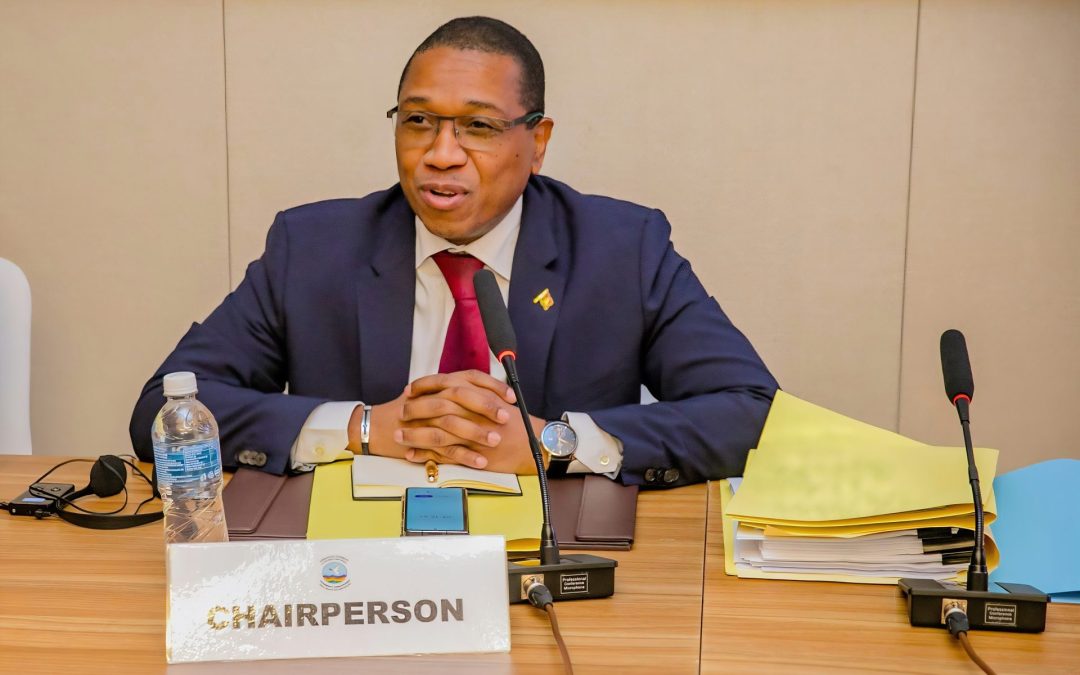
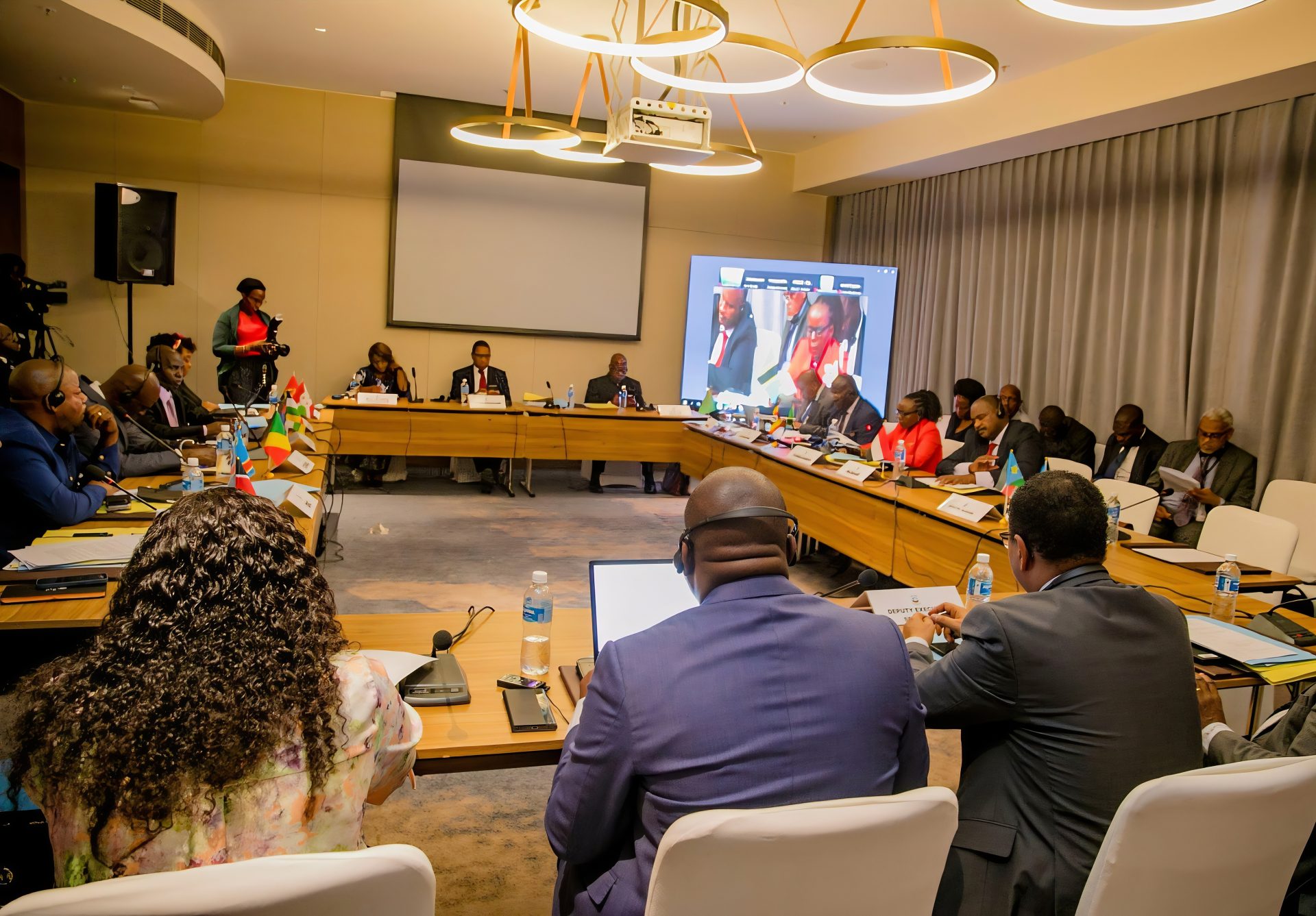
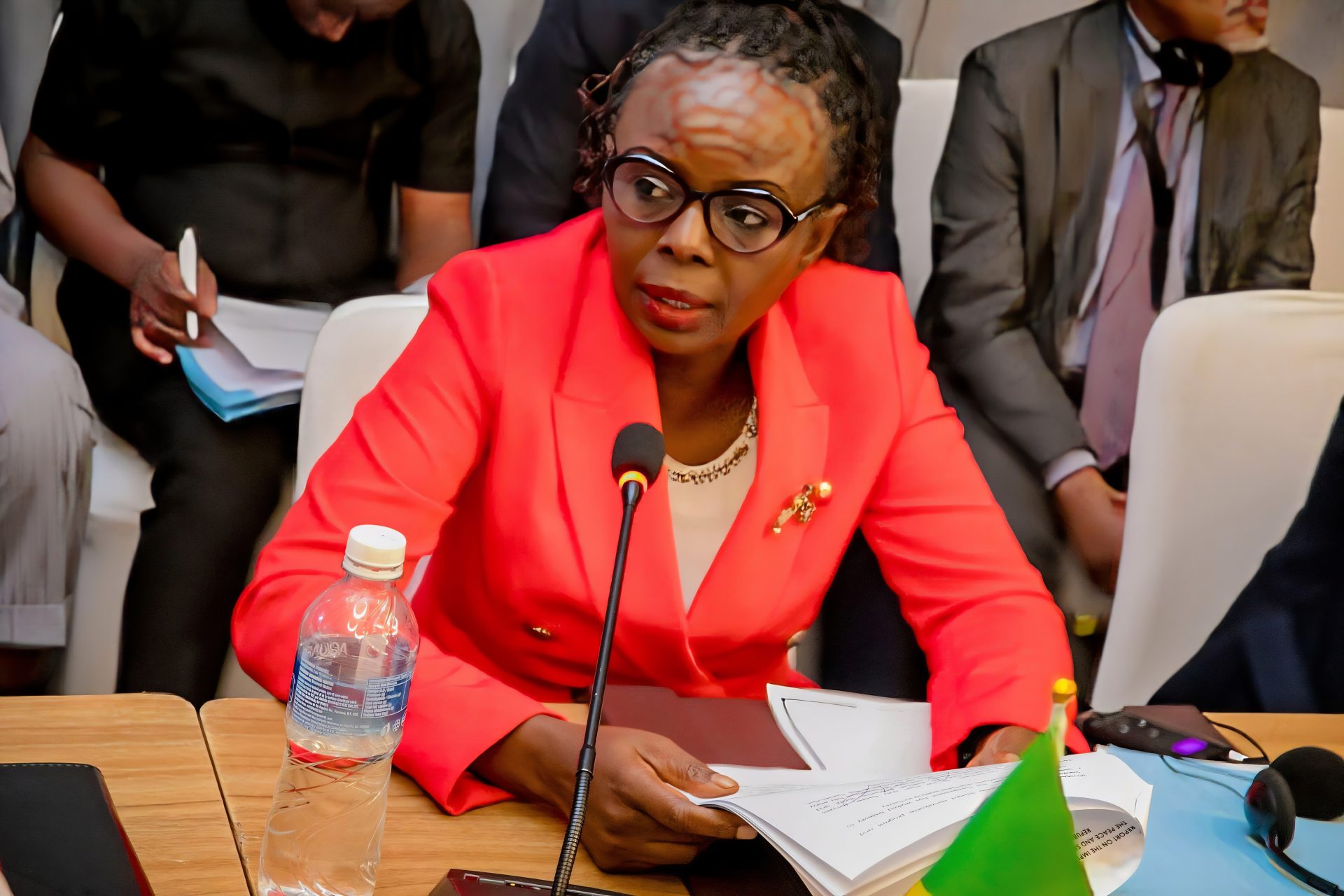 The “living member” status is proven not in declarations alone, but in the continuous, often challenging, work undertaken alongside its neighbours, particularly the DRC.
The “living member” status is proven not in declarations alone, but in the continuous, often challenging, work undertaken alongside its neighbours, particularly the DRC.